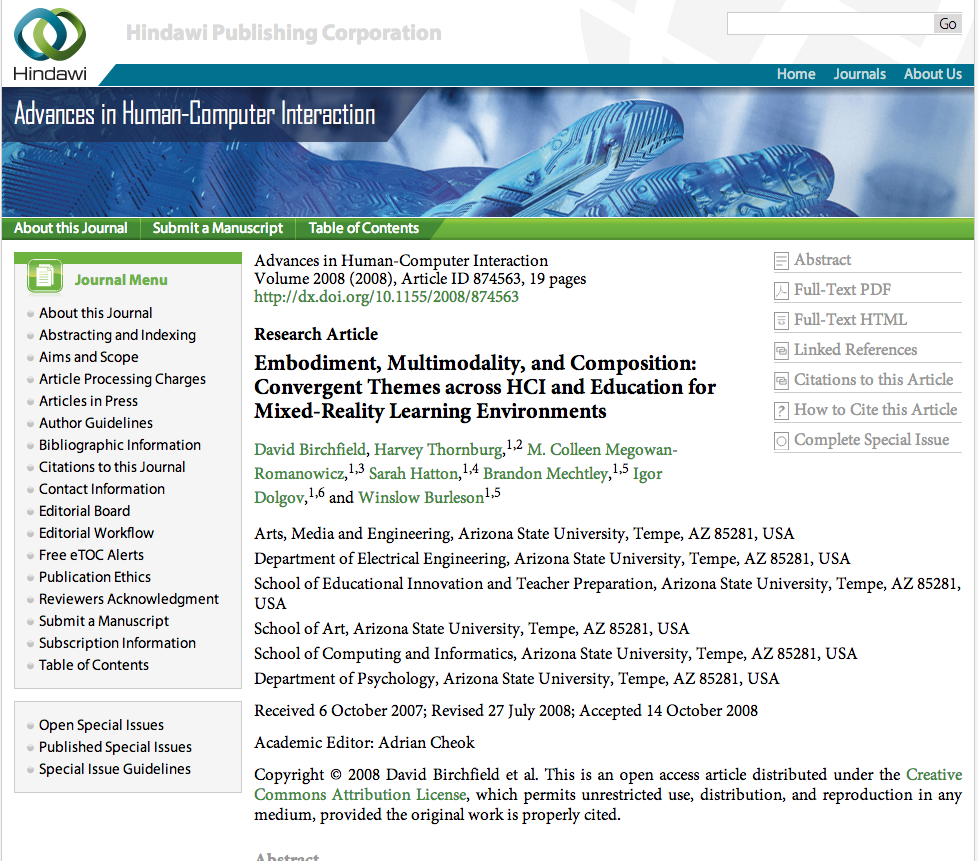
We present concurrent theoretical work from HCI and Education that reveals a convergence of trends focused on the importance of three themes: embodiment, multimodality, and composition. We argue that there is great potential for truly transformative work that aligns HCI and Education research, and posit that there is an important opportunity to advance this effort through the full integration of the three themes into a theoretical and technological framework for learning. We present our own work in this regard, introducing the Situated Multimedia Arts Learning Lab (SMALLab). SMALLab is a mixed-reality environment where students collaborate and interact with sonic and visual media through full-body, 3D movements in an open physical space. SMALLab emphasizes human-to-human interaction within a multimodal, computational context. We present a recent case study that documents the development of a new SMALLab learning scenario, a collaborative student participation framework, a student-centered curriculum, and a three-day teaching experiment for seventy-two earth science students. Participating students demonstrated significant learning gains as a result of the treatment. We conclude that our theoretical and technological framework can be broadly applied in the realization of mixed reality, student-centered learning environments.